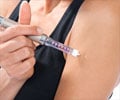For people with type 1 diabetes, some continuous glucose monitoring (CGM) alarm features and settings may achieve better blood sugar control, stated new study published in the Journal of the Endocrine Society.

‘Simple adjustments on the CGM alarm settings can inform patients about high or low blood sugar events early, so they can be head of time for treatments when needed.’





"Managing type 1 diabetes is a constant battle between high and low blood sugar levels, and many patients using CGMs continue to struggle to find a balance," said the study's corresponding author, Yu Kuei Lin, M.D., of University of Utah School of Medicine in Salt Lake City, Utah. "Our study pioneeringly demonstrated that some CGM alarm features and settings may achieve better blood sugar control for patients with type 1 diabetes." In this study, researchers examined data from 95 patients with type 1 diabetes to better understand the associations between CGM alarm settings and blood sugar levels.
They found different CGM blood sugar thresholds for high and low blood sugar alarms were associated with various hypo/hyperglycemic outcomes, and suggest adjustments to these thresholds could lead to better management of hypo- and hyperglycemia.
Source-Eurekalert















